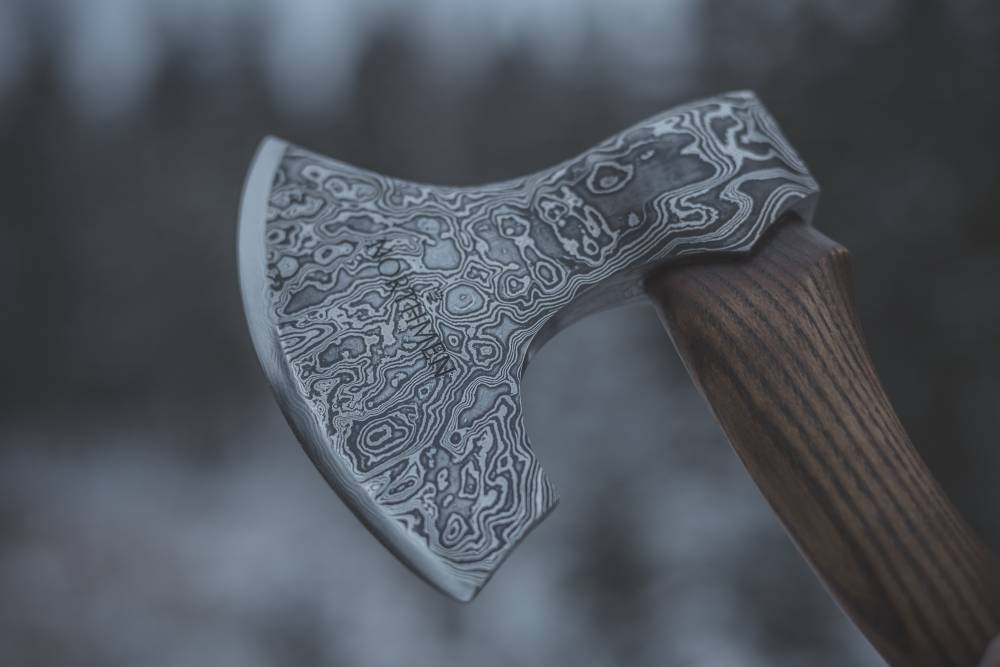
Damascus Axes: The Evolution Of Ancient Craft And Modern Design
Introduction
The Damascus axe is not only a tool but a statement that shows the skill and genius of ancient blacksmiths. It evolved from ancient civilizations, gaining a modern touch; they symbolize the blending of strength, beauty, and craft. Let's discover this exciting journey through the story of Damascus axes, with its ancient origins meeting the design of the day.
Damascus axes are forged weapons and tools that come in steel known for such strength, strength, and beauty in patterns. The primary characteristic feature of Damascus steel is its wavy patterns which are beautiful and superior.
History of Damascus knives.
The Birthplace of Damascus Steel
The story of Damascus Steel was born in ancient Syria with blacksmithing producing the best blades and tools. Having wootz steel supplied from India, they emerged as masters of forging which would create the patterns nowadays famously associated with the Damascus axes.
These early days' uses of Damascus axes had their usages. The warriors used them for battling battles. The hunters needed their sharp edge for their game, and so were the farmers in using them for basic farming tools. This gave them strength and beauty to become symbols of prestige and power.
The Craft of Damascus Axes
Wootz Steel: The Damask Heart
This Damascus steel wonder begins with Wootz steel, a very hard and flexible material of high carbon. The Old World craftsmen melted and folded the steel to achieve durability and display iconic patterns.
Damascene: Unique Patterns of Damascus Steel-
Because they are also layered, no two Damascus axes are alike. Each one carries some uniqueness of itself created within its forging as the ladder, raindrop, or feather patterns make it special.
Introduction to Contemporary Design
Impact of New Methods
Modern, visionary blacksmiths have perfected the Damascus forging techniques with new developments in metallurgy. Computerized tools and high-temperature forges mean greater precision and a more efficient process.
Hybrid Designs: Where Ancient Meets Modern
Modern Damascus axes usually are a fusion of traditional forging with a new-age look. Handles can now be made out of carbon fibers, yet steel still presents itself in its classifying patterns; old meets new. The uses of Damascus axes in recent times.
Damascus axes are collector's pieces and are precious for being seen and used. From a presentation piece at the initial stage to finally their use in ceremonies, they are very special.
In addition to aesthetic use, Damascus axes serve other purposes. Outdoor enthusiasts have used the axes to camp and survive, where they used the axes because of their sharpness and durability.
What's special about Damascus axes?
Cultural and Creative Value
More than that, these axes were also objects of culture each one's story about antique traditions and a mastery of skilled artisans, surpassing the limitations of metalworking.
Pragmatic benefits
Damascus axes far exceed modern rivals in unmatched sharpness to incredible resistance to wear and tear. Form and function are just superb.
Sharpen Damascus axes
Cleansing and Oiling Tips
With Damascus axes, frequent cleaning and oiling help keep them looking their best and functional. This helps to steer away from Rusts thereby keeping them lively over many years.
Sharpening and Storage
Its edge is well maintained so as not to damage its exclusive designs while sharpening. Proper care would mean storing it in a sheath or keeping an axe in a dry place.
Conclusion:
The Damascus axes have evolved, from ancient battlefields to modern artisanship. The axes used human ingenuity to set standards in terms of practicality and unparalleled artistic touches. Collectors and enthusiasts continue to treasure them, and that is what makes Damascus axes a symbol of timeless craftsmanship and design. Q&A What is so special about Damascus axes? Unlike all other axes, Damascus axes are special because of the uniqueness and variability of the steel. Being the perfect example of superb strength and durability, the Damascus steel shows wonderful intricate patterns. Are the Damascus axes still made using the old technique? Although modernizing was implemented to make the process easier, most blacksmiths keep up with the ancient method to keep the uniqueness of the Damascus axes.
Can Damascus axes be practically used in the present time? They can be used in the outdoors camping and survival assignments and even chopping wood. The patterns on a Damascus axe can be kept by regular cleaning, oiling, and proper storage to prevent rust so that the patterns are visible sharp, and clear. Worth collecting? Yes, these axes are a collection item due to their historical value the uniqueness of their making, and the variety in their designs.

